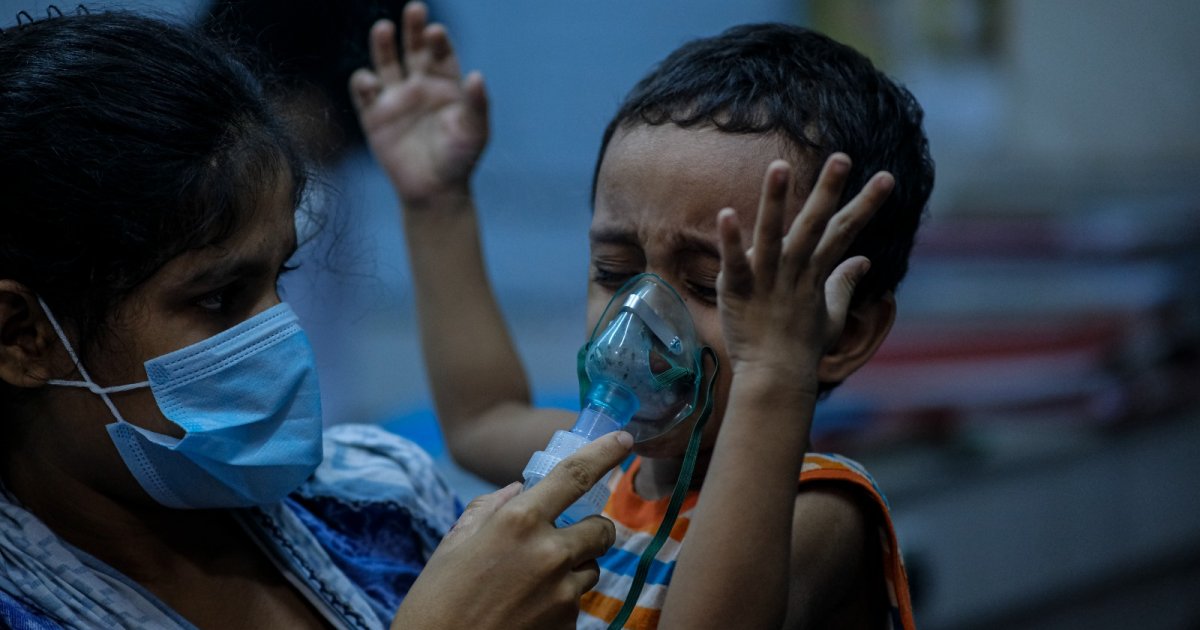As winter sets in, Bangladesh braces for a surge in air pollution — and children are paying the highest price.
With cooler temperatures trapping toxic particles closer to the ground, respiratory illnesses among children are already on the rise.
Pediatric wards in Dhaka are filling up, and experts warn that the season’s worsening air quality could deepen an already alarming health crisis.
According to the State of Global Air 2024 report by the Health Effects Institute (HEI) and Unicef, nearly 19,000 children under the age of five died from air pollution in Bangladesh in 2021 — averaging more than 50 deaths every day.
The report reveals that levels of fine particulate matter (PM2.5) in Bangladesh’s air are approximately 14 times higher than the World Health Organization’s safe limit.
In cities like Dhaka, daily concentrations often reach 100 micrograms per cubic meter—far above the WHO’s recommended threshold of 5.
These microscopic particles penetrate deep into children’s lungs, triggering pneumonia, asthma, and long-term respiratory damage.
At Mugda General Hospital, pediatric wards are overwhelmed with young patients struggling to breathe.
Five-year-old Atoshi, admitted with severe respiratory distress, lies with a nebulizer mask strapped to her face.
Her mother, Raima Akter, shared her anguish: “It started with a cough on her way to school. Now she can’t sleep at night. The doctor said it’s because of the polluted air.”
Dr Mahfuza Jahan, a pediatrician at the hospital, reported a 25% rise in respiratory illnesses among children over the past two years.
“We treat 20 to 30 young patients daily,” she said.
“But once they leave the hospital, the polluted air undoes everything. It’s heartbreaking.”
Eight-year-old Arafat, admitted to Dhaka Medical College Hospital, suffers from chronic lung inflammation.
His father, Rafiq Hossain, a rickshaw puller, said: “He’s been coughing since he was little. I’m scared to send him to school, but I can’t stop his education either.”
Unicef Bangladesh warns that children in Dhaka breathe unsafe air almost every day, with pollution stemming from vehicle emissions, construction dust, brick kilns, and industrial waste.
Md Rezwan Akhter, Health MIS Consultant at Unicef, explained: “Children breathe faster and spend more time outdoors. These fine particles cause permanent lung damage and impair brain development.”
Data from the Department of Environment shows that brick kilns contribute 40% of air pollution, followed by vehicle emissions at 25%, with the remainder from construction and industrial activities.
Environmental experts are calling for urgent action.
Ziaur Rahman of Bangladesh Poribesh Andolon (BAPA) said: “We’ve been warning for years, but little has changed. Without controlling the main sources, our children’s future remains at risk.”
Dr Aklima Nargis from the Department of Earth and Environmental Science urged the government to adopt green urban planning, install air quality monitors near schools and hospitals, modernize brick kilns, and phase out old vehicles.
“Without these steps, we cannot protect our children,” she said.
Abu Jubayer, executive director of the Bangladesh Poribeshbid Society, added: “Air pollution is not just an environmental issue—it’s a fight for our children’s survival. Every child deserves the right to breathe clean air.”
Globally, air pollution causes around 9 million deaths annually, with South Asia—particularly Bangladesh, India, and Pakistan—bearing the highest burden.
In Dhaka, mornings begin with dust-covered school gates and smoke-filled streets.
Children walk to school wearing masks, but experts warn that no one truly knows how much protection those masks offer against the poisoned air.



